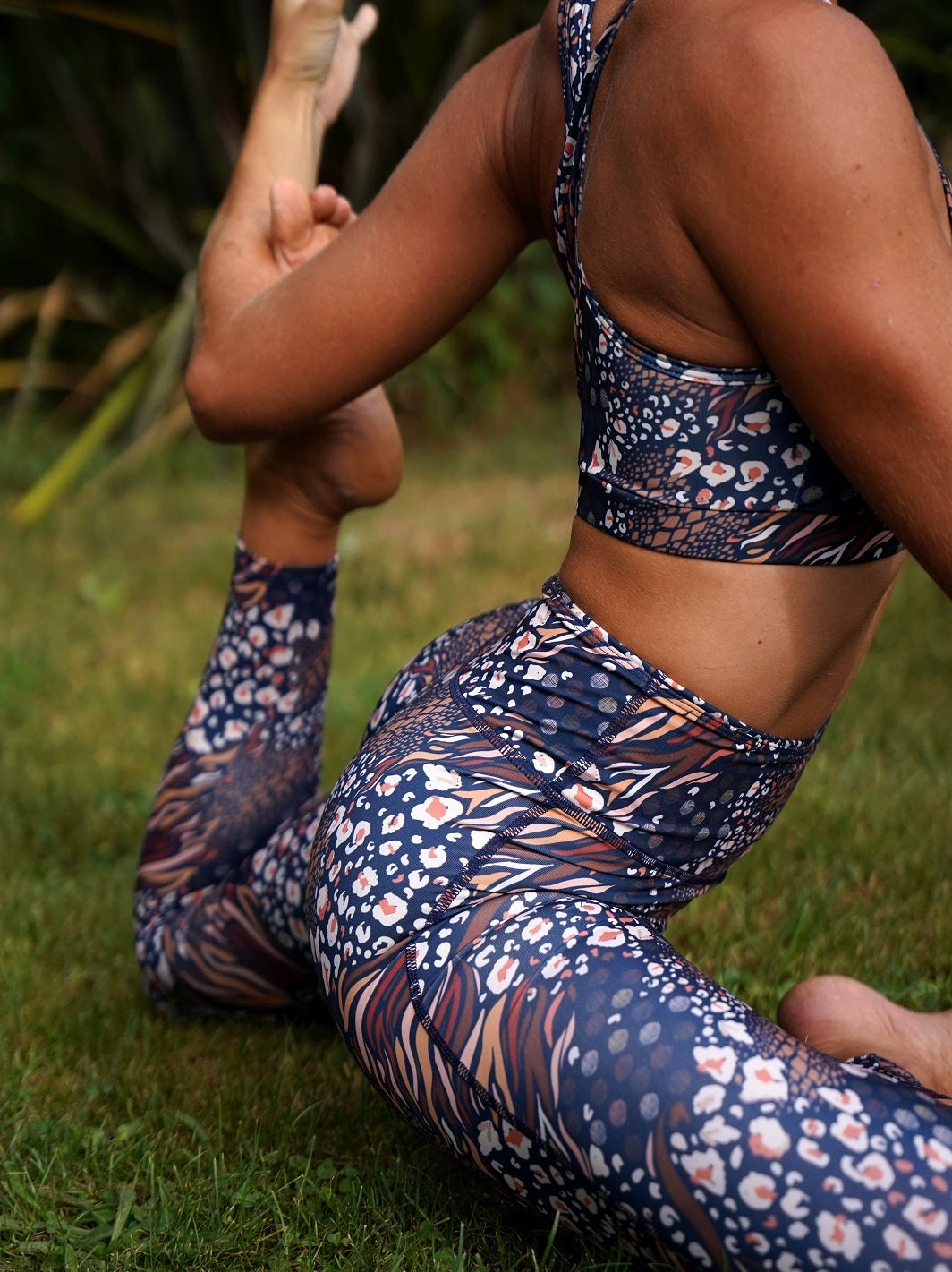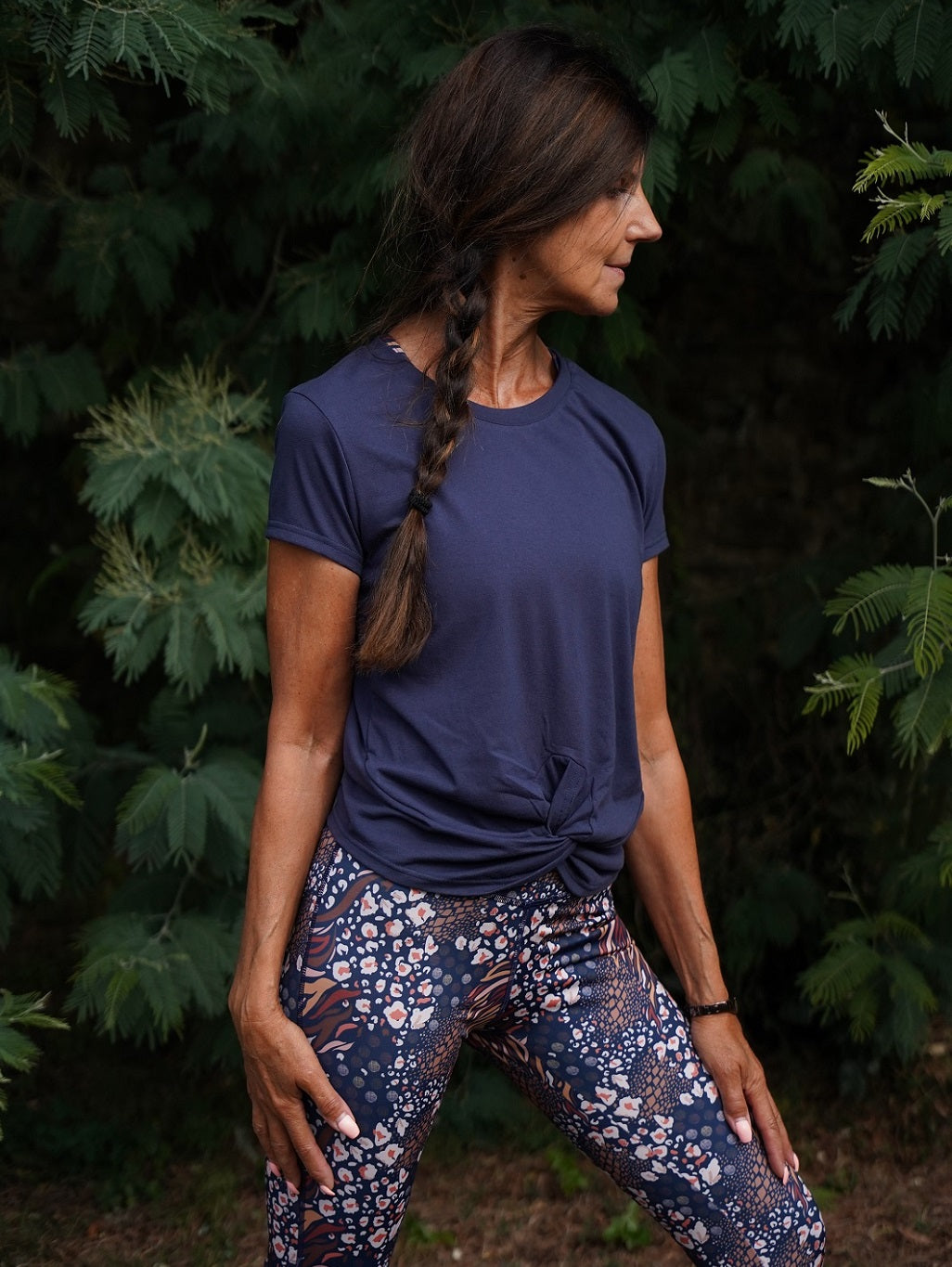In Sanskrit – a language spoken in ancient India – Ayurveda means “science of life” and has its origins in the Veda, a collection of sacred texts dating back more than 5,000 years.
Beneath its dusty antiquity, Ayurveda is nonetheless strikingly relevant for us, women and men of the 21st century.
Subjected to almost permanent stress, fed with foods poor in nutrients and more distant than ever in distance and in knowledge of nature, we all experience more or less annoying imbalances.
Poor sleep, painful digestion, skin irritations, lack of energy...
In Ayurveda, all these ailments are studied in their entirety, making traditional Indian medicine a system of holistic and preventive care.

Based on the principle that people are connected to their environment and to nature, Ayurveda digs deeper and also takes into account in its reading grid more abstract criteria such as mental health, emotional health, lifestyles, eating, sleeping, interactions and communication beyond just the physical aspect.
To stay in shape and develop your self-healing abilities, you will need to detect possible imbalances in the body and mind manifesting themselves in the form of illnesses, symptoms or discomfort. And change your lifestyle.
You have understood, Ayurveda is much more than a therapy, it is a philosophy, an art of living!
And good news, Ayurveda has been officially recognized by the WHO since 1982 as a complete system of traditional medicine.
To better understand how it works, we must briefly discuss the theory of the 5 elements and the 3 doshas.

The theory of the 5 elements
Ayurveda considers everything as a source of energy.
Initially, this energy manifests itself in the form of Aether, or the element of void, of space.
When it condenses, this invisible energy is transformed into Air, a gaseous element, light, dry and impalpable.
A little more condensed, the energy is then transformed into Fire, which represents hot, dry, ascending movement but also transformation.
The energy then passes to the state of water, liquid, cold, without specific form which presents a downward movement.
and finally in Earth, solid, heavy, hard and stable matter.
According to the theory, these 5 elements are found everywhere in the universe (macrocosm) and in the organisms of living beings (microcosm).
These 5 elements combine together to give 3 doshas.

The 3 doshas
The doshas are the heart of Ayurvedic science and the reading grid which allows us to understand the balances or imbalances of individuals, so different from each other.
Unlike traditional medicine which offers “cookie-cutter” treatments, Ayurveda offers solutions adapted to each person, through the 3 doshas.
And when you think about it, this extensive customization is terribly modern!
Now let's explore these 3 major biological humors that make or break the body and mind:
Vata
Vata is the combination of the elements ether and air.
Associated with movement, vata dosha is present in the colon, nervous system, skin, ears and bones.
It is a cold and dry energy.
Pitta
Pitta is the combination of the elements fire and water.
Associated with transformation, pitta dosha is present in the liver, small intestine, blood and eyes.
It’s a warm, moist energy.
Kapha
Kapha is the combination of water and earth.
Associated with cohesion, the kapha dosha is present in the stomach, lungs, tongue and plasma.
It is a cold, damp energy.

We are all made up of these three fundamental energies, in different proportions and unique to each one. By doing a test or during a consultation with an Ayurveda therapist, it is possible to know which doshas are dominant and to rebalance them, if necessary. It is by observing our deep nature that it is possible to understand our needs and live better!
The seasons and times of day are also dominated by a certain dosha. This is one of the reasons why we are led to change our habits and routines according to the seasons, to match our dominant dosha to that of the time and time of year.
The doshas being a complex and fascinating subject, we have given them a very special article to discover here on our blog.
Mode of action
Ayurveda offers a wide range of treatments for the body but also for the mind to treat dosha imbalances. Massage, diet, breathing, meditation, yoga, hygiene and sleep routine, herbal or spice remedies are only a tiny part of what Ayurveda can offer you.
However, one thing all of these techniques have in common: they are gentle, intuitive and accessible to everyone.
The benefits of Ayurveda
The simple fact of wanting to take care of yourself and being interested in Ayurveda is a blessing!
By adopting one Ayurvedic principle after another you will gradually see the effects of this ancestral medicine improving your stress level, your digestive flow, your concentration, your energy level and much more...
Ayurveda and yoga
Yoga and Ayurveda are sister sciences. There is so much to say about how they complement each other that we decided to continue the discussion in another article that explores all the similarities and differences between Ayurveda and yoga.
Ayurvedic routines
Each season brings its share of joys but also challenges, we have concocted a little Ayurvedic routine for each of them.
Diet, hygiene practices, yoga practice, bedtime and wake-up times…all these little things that make up our daily lives must be adapted according to the seasons.
Did you know, for example, that you need to add spices to your cooking in autumn to digest better, clean your nose with salt water in winter to avoid congestion, energize your yoga practice in spring to escape winter torpor or even lie down on your right side in summer so as not to compress the already strained heart and lungs?
Ayurveda is a lot of common sense, an in-depth observation of Nature and a few well-chosen grandmother's remedies, which we had completely forgotten in the panic of our era.
So, ready to discover good habits to create your own routine? Here they are :
- Little Ayurvedic autumn routine
- Little Ayurvedic winter routine
- Little Ayurvedic spring routine
- Little Ayurvedic summer routine
Discover here our eco-responsible yoga outfits made in France from recycled materials, perfectly suited to practicing all types of yoga!
And to not miss any news from Géopélie, subscribe to our newsletter here at the bottom of the page 👇 we only send a maximum of two per month!
Sources:
- Ayurveda health passport
- Ayurveda France
- Ayurvana
- Medoucine
- Yogsansara
Photo credits :
- Chelsea Shapouri
- Conscious Design
- Katherine Hanlon





Leave a comment